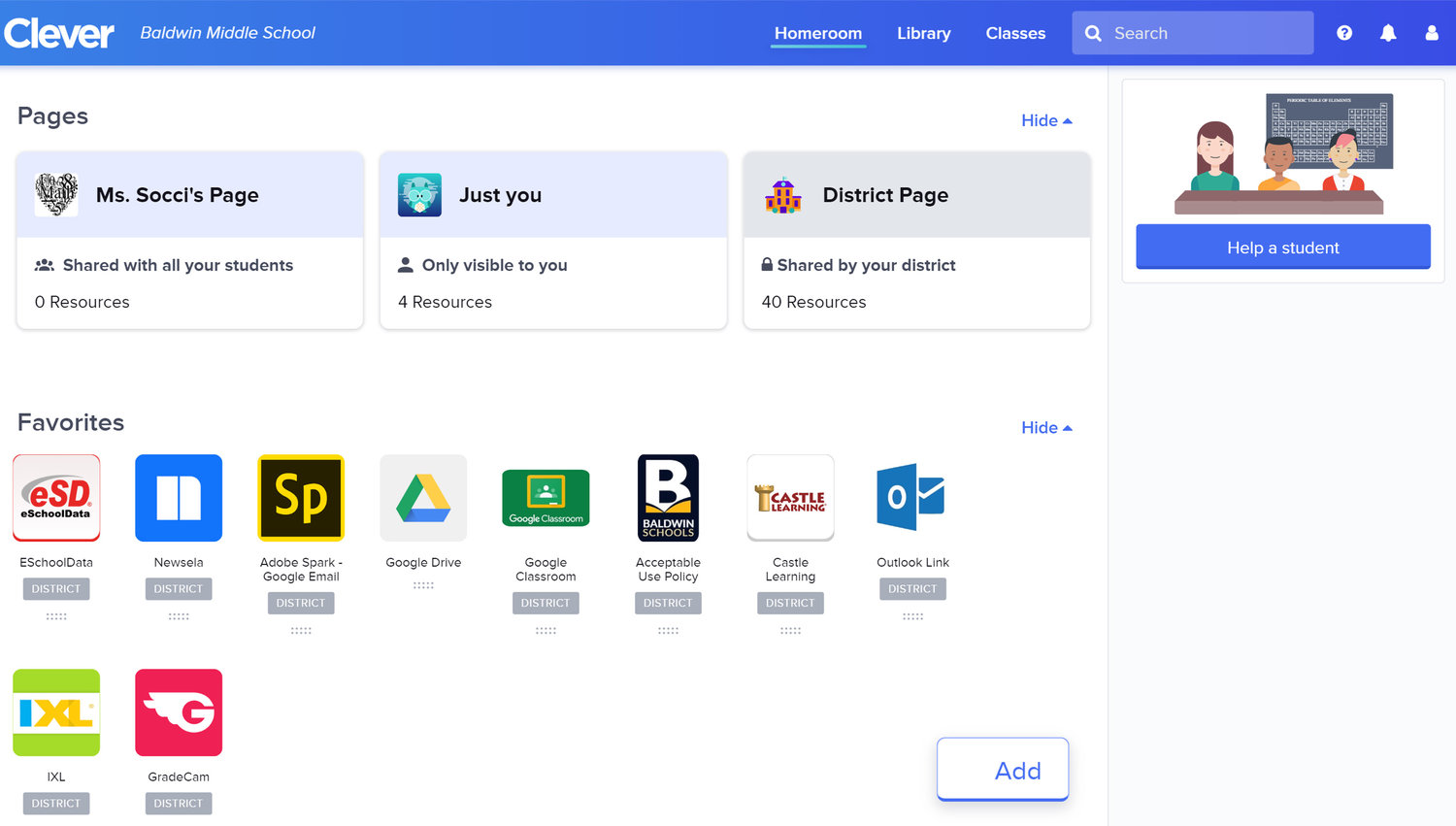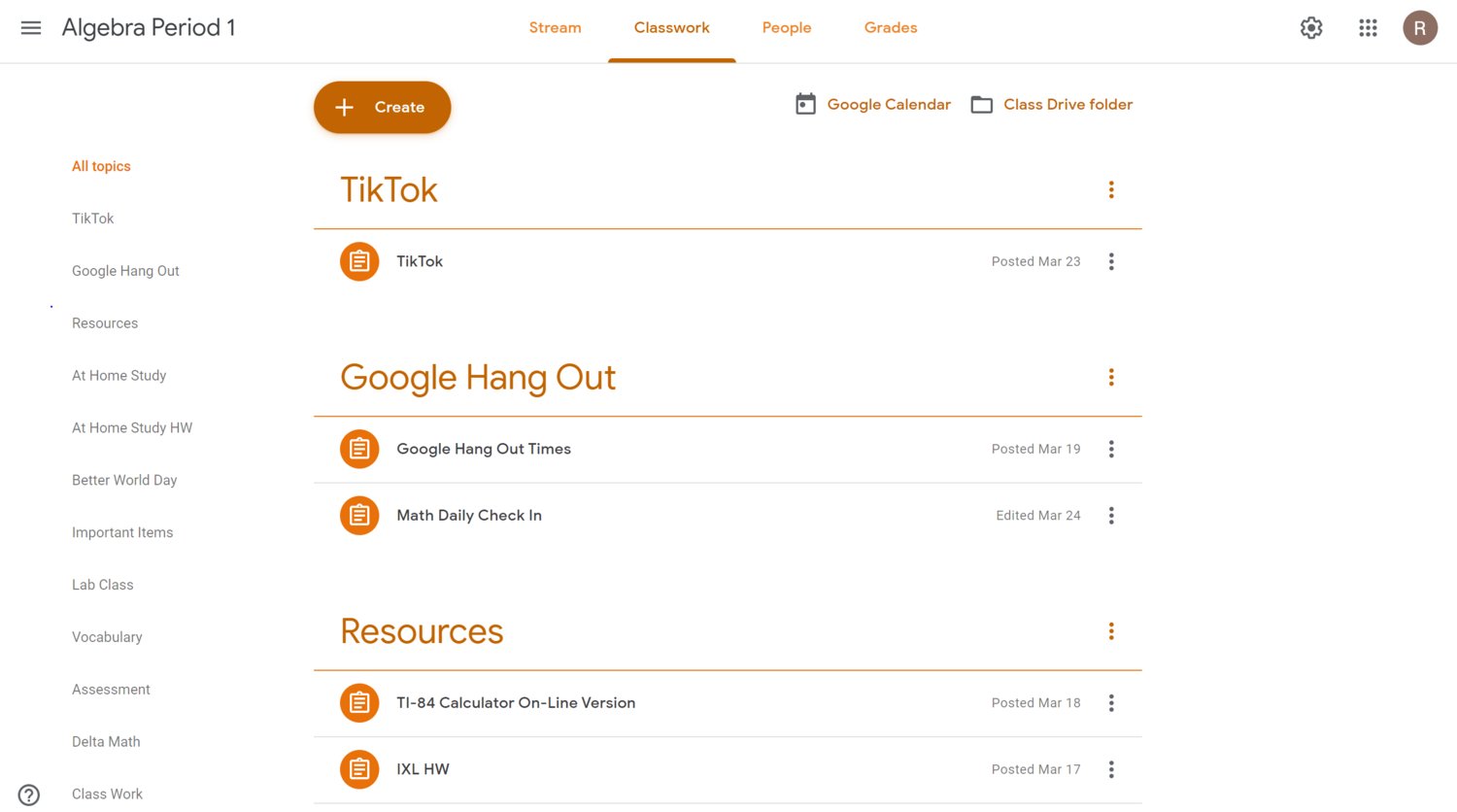Thursday, April 25, 2024
 47.0°,
Mostly Cloudy
47.0°,
Mostly Cloudy
Baldwin makes the switch to e-learning
School districts shift to remote teaching
Baldwin students, teachers and parents are adjusting to a new normal: e-learning.
All New York schools are to remain closed until April 15, as recently ordered by Gov. Andrew Cuomo. And since March 16, programs and web services like Google Classroom have allowed educators to bring the classroom to students’ living rooms — literally.
Morgan Canarick, a fifth-grade teacher at Brookside Elementary School, said the process has been working smoothly and effectively.
“I feel like e-learning has been very successful for me because I give the kids a schedule to follow just like we’re in school,” she said, “so I’m kind of simulating a school day for them.”
Canarick begins each morning with a meeting with her students to review the day’s schedule, which also allows the students to interact with one another in place of face-to-face socializing.
“Honestly I thought this was going to be a lot harder than it is,” she said. “It’s basically what we’d be doing in school.”
Her students log on at a certain time to follow along with her PowerPoint math lessons, for example. And Canarick said the students have adjusted well.
“I feel like I’ve seen a lot of positive reactions,” she said. “The kids are still able to interact with their friends on Google Meet. They are still working together . . . so they kind of feel like they’re still in school.”
Parents have given positive feedback, as well, Canarick added. She tweaks her teaching based on responses she receives from parent surveys each week. She has also assigned activities like scavenger hunts so the students “are still having fun while they’re learning.”
The school district has installed an array of applications and online services for teachers and students to use to more easily communicate with one another, which Canarick said has been helpful.
“Our district is great because we subscribe to a lot of programs, so it makes it very easy for us as teachers,” said Rosemarie Socci, a math teacher at Baldwin Middle School, adding that she has used online services since the beginning of the year so the transition for students was easy.
Students make their way to the school district homepage and click on an option called Clever, a sign-on platform for K-12 education that aggregates other services and apps like IXL, BrainPOP and Newsela.
“The technology is amazing,” Canarick said. “They have everything on there that they could need.”
Socci said her students typically watch a 20-minute video of a lesson and then complete a PDF worksheet before she provides feedback via Google Classroom.
“On a typical day it’s about 40 minutes of work just for my class,” she said, “which is kind of like what they do in class anyway.”
Socci’s students are working on statistics right now, because the members of the math department decided to shift the curriculum based on circumstances. Statistics, which is usually taught later in the year, was moved up to make it more manageable for the students, Socci said, because it is less writing and it is a topic that students generally do well with.
“We didn’t want to make it harder for them, so we kind of picked this topic to be mindful to their needs,” Socci said. “I’m trying not to overburden them. We’re really trying to be flexible and just encouraging kids to really try their best.”
Ester Marcellin, a parent of two children at Brookside, said the first few days of remote learning were challenging for her family. With four people in the household, including her husband, and only one computer that was available, it was difficult to share with her children while she, herself, needed the computer for work.
“I know a lot of parents have issues because there’s only one computer, and if you have two or three kids and you have to work, as well, it’s a struggle,” Marcellin said, adding that her husband was able to get a second computer working, so the schedule started to flow smoother.
Marcellin also said she tries to keep a routine in the morning, waking up her children and having them get dressed as if they are physically going to school. It takes them out of a different headspace.
“Kids are home — they automatically think it’s a vacation,” she said. “They have to be outside of their bedroom at a table on a chair, like a desk. It takes them out of that mode of, ‘I’m home, I’m on vacation.’”
Overall, Marcellin said she believes her children are missing out on so much more having to be home-schooled.
“If this continues for the rest of the school year, I think it’s a total disadvantage,” she said. It feels like “a pause button on this whole thing. It saddens me, really.”
But for district parent Alicia Dennis, who has one child attending Brookside and one attending the middle school, the experience has been slightly different. Her fifth-grader, Allison, is taking Canarick’s class.
“It’ good because my fear was she would get tired and I would really have to coax her into being online,” Dennis said, “but she’s really excited about seeing Ms. Canarick and her classmates. I was worried about her being home, but she’s motivated.”
Dennis said her daughter would sign on around 8:30 each morning and start off each day following along with Canarick, who goes over the lessons and assignments. It’s very interactive, she added, and Canarick is quick to reply to questions.
“She gets to see her classmates, so it’s fun. It makes her feel a part of it,” Dennis said of her youngest daughter. “She’s invested.” As a parent, Dennis said she feels involved, too. She is able to go online and check teachers’ notes and messages from Principal Unal Karakas.
She commended the district’s use of technology, too.
“Google Classroom is phenomenal, and I thank [Superintendent Dr. Shari Camhi] for investing in so much good technology for the school district,” Dennis said. “She has invested in a lot of technology that’s available and is very useful.”
Many of the apps and programs had been available before the coronavirus pandemic caused schools to temporarily close, so it “wasn’t so new to the students,” Dennis, an educator in New York City, continued. Because it was already in place, the students did not have to play catch-up. They were already comfortable using the programs.
“She’s grasping information,” she said of her youngest. “I feel comfortable. I don’t feel like she’s lost or like she’s not learning anything. It’s good that you can have that kind of relaxation.”
HELP SUPPORT LOCAL JOURNALISM
The worldwide pandemic has threatened many of the businesses you rely on every day, but don’t let it take away your source for local news. Now more than ever, we need your help to ensure nothing but the best in hyperlocal community journalism comes straight to you. Consider supporting the Herald with a small donation. It can be a one-time, or a monthly contribution, to help ensure we’re here through this crisis. To donate or for more information, click here.
Sponsored content
Other items that may interest you









